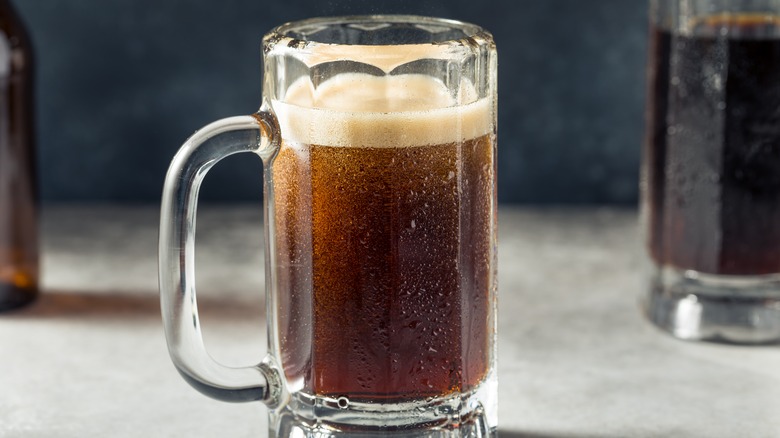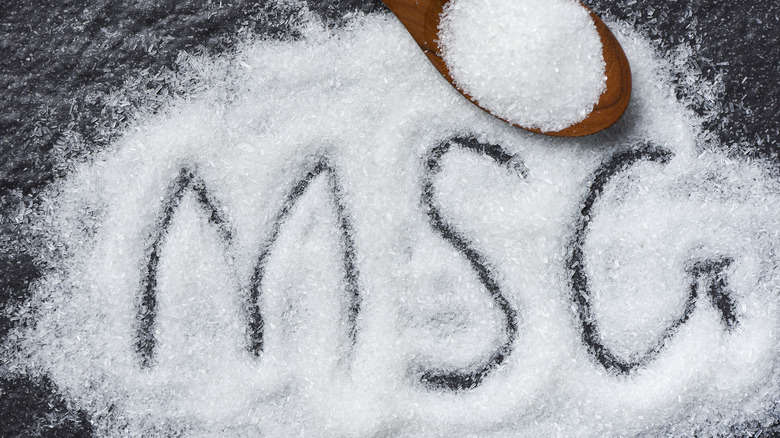Is It Dangerous To Use Sassafras In Homemade Root Beer?
There are few soft drinks more iconic than root beer. Though its origins are tricky to pin down (one strong theory is that root beer started as an herbal tea concoction), we know it dates to the 19th century. There are all sorts of root beers available for purchase, whether you want to go with a craft variety or a widespread brands such as Mug or Barq's. And for a long time, one of its key flavoring ingredients was sassafras.
Sassafras, also known as cinnamon wood, is a product that has been around for a while. It's not just as a food additive, either; it's popped up in soap, toothpaste, and a bunch of other products. It also has a long history of use as a medicine in Native American and Chinese cultural traditions.
In the latter half of the 20th century, though, sassafras had a rough patch in America.
What went wrong with sassafras?
In 1976, the FDA banned sassafras on the basis of 1960s studies that declared one of its key ingredients, safrole (also known as sassafras oil), to be carcinogenic. While the European Commission on Health also believes safole to be linked to cancer, European countries haven't actually banned it.
The U.S. ban still stands today, though, despite the fact safrole also occurs naturally in cinnamon, black pepper, and nutmeg. (Thankfully we don't ban those, at least, as a life without black pepper does not seem worth it.) To be fair, safrole is also used in the production of ecstasy, so it does have some potential nefarious purposes.
But here's the wild thing. The rats in those 1960s studies were given the equivalent of 32 bottles of root beer per day. Forget cancer; that number of bottles of any soft drink is likely to cause serious health concerns. So maybe sassafras could theoretically cause cancer, but to get there, you'd have to consume enough of it that your friends and family would be seriously questioning whether you needed an intervention. There's also the fact the effects of safrole in rats have never been recreated in humans, notes McGill University. Altogether, it seems like there's pretty strong evidence it's not nearly as bad as has been believed.
This isn't the first time a product has been mischaracterized
Unsurprisingly, this isn't the first time a product has been characterized — either by government officials, or by society writ large — as far more detrimental than it actually is. Probably the most famous is the backlash against artificial sweeteners, which were once linked to cancer, although we now know those studies were dubious at best. Salt is another example, as Time once declared in a famous piece titled "Salt: A New Villain?" While too much salt is certainly detrimental, it went way too far, and everyone's cooking was unspeakably bland for a while.
And, of course, there was the case of MSG. MSG, or monosodium glutamate, is an umami flavor enhancer first discovered in 1908 by a Japanese chemist named Kikunae Ikeda. It was long the province of Asian food, particularly Chinese-American cuisine. And the rise in popularity of Chinese food led, perhaps unsurprisingly, to a xenophobic backlash that blamed MSG for "Chinese Restaurant Syndrome," a supposed weakness and pain in a person's arms and chest.
This was, of course, entirely based on vibes; numerous studies have been conducted on the health risks of MSG before and since, and none have found any link to safety issues. Additionally, MSG is in tons of products other than Chinese food. But for decades, the belief was so prevalent that American Chinese restaurants had to include "No MSG" on their menus to attract white customers.


